News Archive
Weekly Balloon News #10 - January 31st. 2023
As I have learned over time, it is always better to keep quiet if you have nothing to say, than to fill the air with something stupid. That's how I could define this second hiatus in the weekly evolution of this humble newsletter. January doesn't seem to end anymore -yes, I hate summer- and with the northern hemisphere pretty much frozen, nobody seems to want to stick their nose out to launch a single balloon. So despite the few news that this newsletter brings for its second issue of 2023, here we go.
Recent balloon launches and landings
Finally, after almost a month of waiting, the first balloon launched in 2023 is aloft. Gone are those days in which just a few hours after the start of each year, Project Loon began to fill the screens of aircraft tracking sites with their characteristic yellow balloons. Aerostar, the South Dakota based balloon firm, sent up this early morning a Thunderhead balloon with callsign HBAL616 from their never disclosed facility in the southernmost border of Santa Fe County (NM). Literally in the middle of nowhere.
The balloon was launched at 4:11 utc on January 31, 2023 and after reaching the usual float altitude about 64.000 ft it was moving -at the moment of writing this- towards the northeast across New Mexico. Real time tracking available in the link below this humble bulletin.
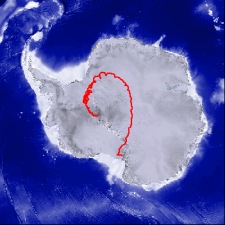
In the other side of the news, the SPIDER (Suborbital Polarimeter for Inflation Dust and the Epoch of Reionization) instrument launched on December 21, 2022 as the only balloon flight of the 2022/2023 NASA campaign in Antarctica finally landed after a little more than 16 days aloft. The landing occured at 4:18 utc on January 7th, 2023 near the Hercules Dome field camp, about 430 km from the South Pole. At left we can see the entire flight path. What is remarkable about the route followed by the balloon is that it makes it clear that the mission was carried out with a polar vortex (counterclockwise wind circulation pattern that runs through the entire Antarctic continent) that never fully formed.
Although SPIDER's landing could lead us to think that the mission has been completed, the reality is that the most important part still needs to be completed: recovering the data obtained during the entire mission.
In general terms, long-duration missions have some differences from those of more conventional durations. As soon as they are launched, the balloons communicate with the base through a high-speed system, but it is only available for a few hours or a day at the most. Once the balloon disappears below the horizon, that possibility is lost and communications begin to be handled through satellite links that allow the transmission of much less data.
From that moment, it is only possible to obtain some reference data on how the instrument carried by the balloon is behaving, and to send some commands to activate or modify some of its functions. All of the information that the telescope obtains during the rest of the mission is stored on a series of disks on board, which it is mandatory to recover.
If you want to know the details of the operation and its intricate complexities, I strongly recommend reading the chronicle that Jeff Filippini has written about it on his blog.

What's on in the field

On January 28, 2023 over 450 aviation comrades, friends, and family members of the late Col Joe Kittinger gathered at First Baptist Church in Orlando to celebrate his life. As you may remember from the previous edition of this bulletin, the aviation and ballooning legend passed away on December 9 at the age of 94.
The ceremony included a four plane diamond formation fly-by led by Keith Phillips starting the outdoor salute, followed by skydiver, Lance Aikins, who landed at the feet of the crowd. Phillips and team closed the aerial salute with the missing man formation followed by the bugle playing of Taps. Then, those gathered to honor Col. Kittinger proceeded into the church to enjoy memories from his grandson, Jack, and noted American aviators to include Alan Eustace, Bob Snow, and astronaut Bob Crippen.
Also all Flags were set to fly at half-staff on Saturday across the state of Florida to honor him.

World View Space the Tucson-based balloon firm announced this month that it would merge with special purpose acquisition company (SPAC) Leo Holdings Corp. II in a deal worth $350 million. I'm not an expert in the matter but in the last years, SPACs have become a popular vehicle for private companies looking to enter public markets outside the traditional Intial Public Offering process, and get a large injection of cash in the process.
Meanwhile, the company continues to advance their plans to start tourist flights from Page (AZ) sometime during 2024 but at the same time is keeping an eye in the remote sensing field with agreements with Scepter for missions starting this year and the continuation of their Stratollite missions for Sierra Nevada Corp. that started last year.
World View have been facing some financial troubles as has been public in the last months. That includes some personnel lay offs and even their helium supplier arriving at Tucson HQ and putting locks on the helium trailers until they paid most of the invoices.
Balloon image of the day
Since April 2021, I have published through my Twitter account (@stratoballoon) -at first daily and then more spaced out- a series of images from my archives that reflect important or curious moments in the history of scientific ballooning. Now, every week I will be including some of those posts in this newsletter. Those who want to see more similar content can do so by exploring the hashtag #BalloonImageOfTheDay
Satellite image of @WorldViewSpace balloon facility in Tucson (AZ) during the launch preparations of #GRYPHON5 #Stratollite mission on November 20th, 2017.
— StratoCat (@stratoballoon) February 12, 2022
Details of the flight: https://t.co/SeyODVO2Ou#SpaceportTucson#BalloonImageOfTheDay pic.twitter.com/OIPra93n1k
This constant level balloon landed near Dutse. Nigeria in June 2006. Villagers were surprised and frightened when the balloon took off again without explanation, so they decided to tie it. The @CNES balloon was part of African Monsson Study campaign (AMMA).#BalloonImageOfTheDay pic.twitter.com/xeNPglxjvM
— StratoCat (@stratoballoon) October 26, 2021
New contents in StratoCat
Sorry folks, but no new contents this week. I've spend the last weeks making a deep dive in StratoCat's database to fix some errors, duplicated data and also implementing Cloudflare for the website as my hosting provider has already warned me several times that I have exceeded the contracted monthly transfer fee. Cloudflare comes to solve this problem by caching Stratocat content on its own widespread servers. That also should improve Stratocat's loading times.
See you in seven days soon.
Weekly Balloon News #9 - January 3rd. 2023
These days of the year are always slow in terms of activity in the field of scientific ballooning, since Mr. Winter takes over everything in the northern hemisphere and as we already know, everything relevant to the activity occurs there. Therefore, it is not surprising that this weekly newsletter also follows the general trend by putting itself on "pause" for a few days. Likewise, some issues related to personal rest made this last installment first installment of the new year come after a long hiatus of almost three weeks. However, much of the little that needs to be reported is quite relevant. Here we go.
Recent balloon launches and landings
On December 12, Aerostar, the South Dakota balloon firm made a night launch from its never-disclosed facility in Santa Fe County, New Mexico. The balloon, a Thunderhead balloon with identification HBAL-614, crossed Texas, the Gulf of Mexico, Florida in a few days and after flying over the Bahamas it entered the Atlantic Ocean, where it was last detected in flight at 1:36 p.m. utc on December 18. Below we can see a map of its route. It will emerge elsewhere at some time?, we'll see.
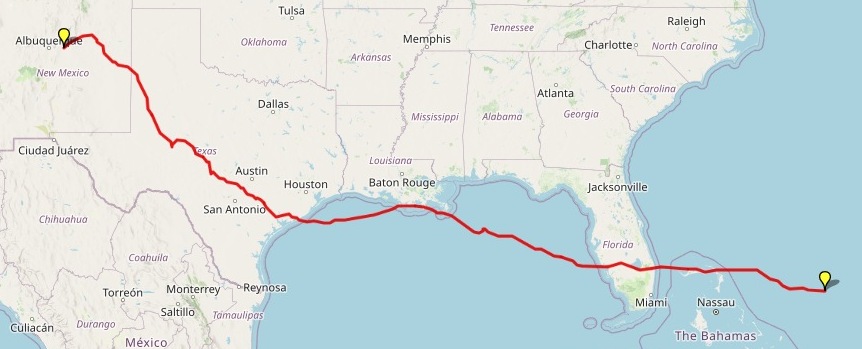
With only three failed attempts on its credit -which in terms of Antarctic campaigns is almost the first attempt- finally on December 21 at 21:25 utc the SPIDER instrument began its Antarctic journey.
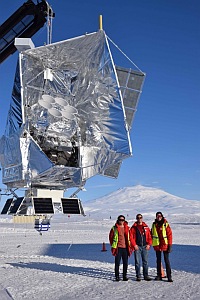
Let's briefly recall SPIDER is the acronym for Suborbital Polarimeter for Inflation Dust and the Epoch of Reionization which in short we could define as a balloon-borne experiment designed to search for primordial gravitational waves imprinted on the cosmic microwave background (CMB). After a slow ascent to float altitude of 115.000 feet, the 34 million cubic feet balloon moved across the Antarctic Plateau following the typical anti-clockwise trajectory mounted in the so called polar vortex. By the time of writing this -at the turn of the year- the balloon completed more than a half of the full circle to the south pole.
The real time location of the balloon and its cargo cand be followed here.
This is the second Antarctic trip for SPIDER after a first one experience that lasted a little more than 16 days in 2015. Also this mission is the first one carried out by the NASA Balloon program in Antarctica since January 2020 when the aftermath of the worldwide COVID-19 outbreak forced to cancel the 2020/2021 and 2021/2022 austral summer campaigns in McMurdo.
This year's small outbreak of the disease in McMurdo station also affected the planned launch schedule: the delays due to the two-week quarantine imposed by the authorities forced the cancellation of two other basically technological missions -but with scientific loads of opportunity- as I had mentioned in past editions of this bulletin.
What's on in the field

Retired Col. Joe Kittinger, a true world ballooning and aviation legend, passed away on December 9 at the age of 94. He was at the core of the most important manned balloon projects in the United States.
He spent his early career in the Air Force as jet pilot in Nevada and Germany until 1954 when he was assigned to the Air Force Missile Development Center (AFMDC) at Holloman Air Force Base, New Mexico. On June 2, 1957, Captain Kittinger made a balloon flight to 96,000 feet above Minnesota in the first flight of the Air Force's "Project Man High". For that mission he was awarded the Distinguished Flying Cross.
After being assigned to the Aerospace Medical Research Laboratories, Wright-Patterson AFB in Dayton, Ohio, Kittinger was appointed Test Director of "Project Excelsior" investigating escape from high altitude. During this project there were three high altitude jumps accomplished from a balloon-supported gondola--from 76,400 on November 16, 1959, from 74,700 25 days later, and on August 16, 1960, from 102,800 feet, then the highest altitude from which any man has jumped.
On December 13-14, 1962, Captain Kittinger, accompanied by Astronomer William C. White rose to an altitude of 82,200 feet in a balloon over Holloman AFB, as part of an astronomical research project known as "Stargazer".

After serving three combat tours in Vietnam (at the end of which was shootdown and held prisioner), he retired in 1978 from active duty and started a career as an engineer at Martin Marietta Aerospace. While there, he devoted part of his time to his old love of ballooning. He won the Gordon-Bennett balloon races in 1982, 1984 and 1985 before accomplishing his most ambitious feat, a solo balloon crossing of the Atlantic. On September 14, 1984, Kittinger boarded the helium balloon "Rosie O'Grady" to begin his most daring flight, traveling more than 3,500 miles at altitudes ranging between 10,000 and 17,000 feet for a crash-landing in northern Italy on 18 September, setting then a record for the longest solo balloon flight as well as a distance record for this class of balloon.
Over the years, Kittinger was approached by many seeking his support and advice in recreating and surpassing his 1960 stratospheric leap, but he always refused. However, in 2010 he accepted to be part of the Red Bull Stratos Project as Baumgartner's mentor and capsule communicator at mission control.
Personally, I think that one of the best ways to learn more about the enormous figure of Kittinger is through his autobiography "Come up and get me", a must read for anyone interested in the matter.
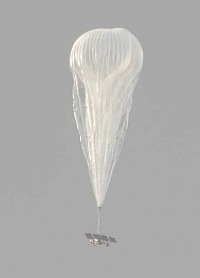
Historically, balloons have been a fundamental tool in the validation of satellite data, since they allow in-situ measurements to be made concurrently with orbital platforms, "seeing" the same atmospheric parcel and then allowing comparisons of the parameters obtained.
Recently, the Leibniz Institute for Tropospheric Research published a research article on which the group compares data from the AEOLUS satellite launched in 2018 with wind observations from project Loon's stratospheric balloons (image at right). The wind satellite Aeolus has a powerful laser on board, called ALADIN which is the first Doppler wind lidar in space to provide profiles of horizontal wind speed from the Earth's surface or from the top of thick clouds up to a height of about 30 km on a global scale. In the study, data obtained from 229 stratospheric balloons of the Project LOON flown between July 2019 and December 2020 above tropical Latin America, Atlantic Ocean, Africa and Indian Ocean was used to compare Aeolus measurements in the same time/spatial frame (see image below).
The data set from LOON project is unique because it gathered in situ measurements of meteorological parameters (temperature, humidity, pressure, wind direction) in the lower stratosphere over poorly surveyed regions and extended in time. For this reason, it will not be strange that from time to time we will see research based on these data, which by the way, were made available to the scientific community and the general public, a few months after the end of the project in January 2021.

An interesting summary of the research can be read in Science Daily while the article itself is freely available on the website of the Quarterly Journal of the Royal Meteorological Society
On December 18, the inhabitants of a large part of the Province of Pangasinan, in the Philippines, were shocked by the presence of a bright object in the sky. From several cities in the region such as Bachelor East, Baguio, Natividad, Dasol, Sison and Dagupan City it was possible to see the strange visitor shortly after noon. Dozens of images and videos were taken by many people who immediately began to post them on social networks. What could be seen in the higher resolution images was a kind of very bright airship evolving at high altitude. Some calculations mentioned that the object was between 40 and 60 thousand feet, although it is not certain how accurate those estimates are or on what data they are based.
Despite the fact that the incident occurred almost two weeks ago, the clearest image of the event came to light on the first day of the year 2023 and it is what we see below these lines. The photograph was taken by Vinz Pascua from Dasol, Pangasinan at about 1:50 pm. The photographer used a 400mm lens with 2x Teleconverter.
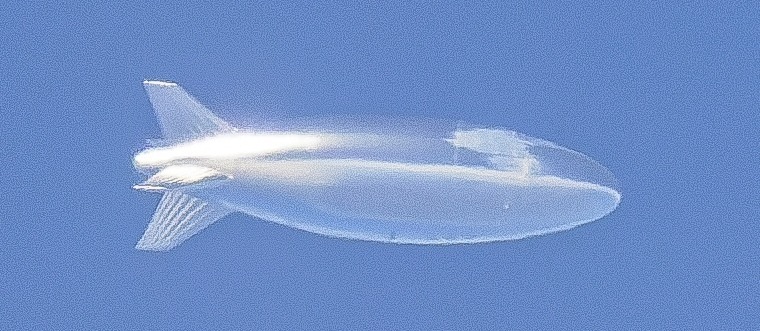
A quick review of the hourly records of the different aircraft tracking systems at the time of the incident do not show any kind of vehicle moving in the area, outside of the usual commercial aircraft traffic. This does nothing but highlight the stealthy nature of the raid. We must remember that, for example, during a series of joint military exercises between the US and Philippine armed forces that took place on the island in March 2022, the Thunderhead stratospheric balloons launched as part of those operations carried a transponder that allowed their monitoring in real time. In the days following the incident, the silence of the Philippine authorities about the event -that still remains- only increased speculation that it could be a Chinese solar airship conducting a "testing the fence" exercise or some kind of electronic intelligence survey.
Some specialized media -and myself in my posts on Twitter- highlighted the similarity between the Pangasinan aircraft and the airship being developed by Sceye in the US. Some details of the shape and distribution of the control surfaces vary between the two models, but both appear to be constructed of a similar highly reflective material and have solar panels on top. However -and this is just speculation- it is likely that the fundamental difference lies in the way it is released. SCEYE's blimp operates out of a hangar in New Mexico and launches fully inflated.
On the Chinese side, its YUANMENG stratospheric airship -which all analysts point to as the possible culprit in the event- is released deflated in the manner of a common stratospheric balloon and gradually acquires its final shape as the gas inside, expands. This is no minor difference, as it would allow a "tactical" deployment of the platform from practically any of the dozens of bases that the Asian giant has in the disputed South China Sea. It is highly probable that the airship seen over the Philippines has departed from one of these bases and not from any of the huge hangars that have been detected by satellite but are located in deep mainland China. It is unlikely that an object of that size and visibility would go unnoticed on such a long voyage from Inner Mongolia to Philippines.
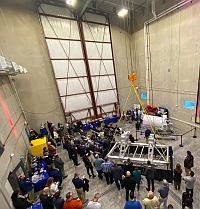
A new research building was inaugurated on December 12 at the University of Arizona Tech Park at The Bridges that will serve to test and prepare balloon-borne astronomy missions. The so called Mission Integration Lab, provides a high-bay hangar-like space which will allow researchers to prepare and test balloon payloads and other space payloads before their flights.
During the ceremony, were on display from two balloon-borne missions: the Terahertz Intensity Mapper, a NASA-funded balloon mission designed to create a giant map of galaxies from over 5 billion years of cosmic history and the Galactic/Extragalactic ULDB Spectroscopic Terahertz Observatory or GUSTO, another NASA-funded mission to carry an infrared telescope to study the lifecycle of stars in the interstellar medium.
Both mission will be launched by the NASA Balloon program in the near future.
Balloon image of the day
Since April 2021, I have published through my Twitter account (@stratoballoon) -at first daily and then more spaced out- a series of images from my archives that reflect important or curious moments in the history of scientific ballooning. Now, every week I will be including some of those posts in this newsletter. Those who want to see more similar content can do so by exploring the hashtag #BalloonImageOfTheDay
The "Pac-Man" moment on every high altitude balloon flight. #BalloonImageOfTheDay pic.twitter.com/PkXuD8ls80
— StratoCat (@stratoballoon) December 11, 2021
In 1990, @CNES dropped from a balloon launched at Aire Sur L'Adour base a space shuttle model as part of the #FALKE program. Goal was to perform aerodynamics tests in real flight conditions (subsonic and hypersonic) for ESA's #HERMES space plane project. #BalloonImageOfTheDay pic.twitter.com/I1pjq2j5ee
— StratoCat (@stratoballoon) July 5, 2021
New contents in StratoCat

Last december, I've received a message from a visitor of the website regarding some typos he found in one of the flight reports of a balloon mission carried out in Japan. The correction to that flight -which was aimed to test the unfolding method of the membrane of a the future solar sail IKAROS- triggered a massive revision of several other Japanese balloon missions on the same time frame.
By the way, if you detect any type of inconsistencies and errors in the data published in any part of the site, do not hesitate to send me a message pointing out the error. Sometimes it is difficult to keep an exhaustive control of more than 15,000 flight records so any help is welcome.
Thus in this update, you could find expanded or new information on the flights listed in the table below.
| Launch base | Date | Experiment | Flight duration |
|---|---|---|---|
 Taiki Taiki | 2017/6/24 | BALLOON LOAD TAPES TEST | 2 h 36 m |
 Taiki Taiki | 2017/6/23 | BIOPAUSE PROJECT ATMOSPHERIC SAMPLER | 2 h 53 m |
 Taiki Taiki | 2016/9/5 | O2 AND NO2 OBSERVATION | 2 h 45 m |
 Taiki Taiki | 2016/6/12 | MABE-1 (Mars Airplane Balloon Experiment One) | 3 h 20 m |
 Taiki Taiki | 2016/6/8 | BIOPAUSE PROJECT ATMOSPHERIC SAMPLER | 2 h 38 m |
 Taiki Taiki | 2009/6/19 | PHENEX (Polarimetry for High ENErgy X rays) | 10 h |
 Sanriku Sanriku | 2006/8/30 | SOLAR SAIL DEPLOYMENT TEST | 3 h 10 m |
 Sanriku Sanriku | 2006/6/13 | PHENEX (Polarimetry for High ENErgy X rays) | 12 h 5 m |
 Sanriku Sanriku | 2005/5/29 | SOLAR SAIL DEPLOYMENT TEST | 5 h 7 m |
 Sanriku Sanriku | 2003/8/23 | SOLAR SAIL DEPLOYMENT TEST | 3 h 38 m |
As usual, all the flight reports are full of technical details, pictures -when available- and external references on peer-reviewed papers, freely available thanks to Sci-Hub and the open access community.
See you in seven days.


